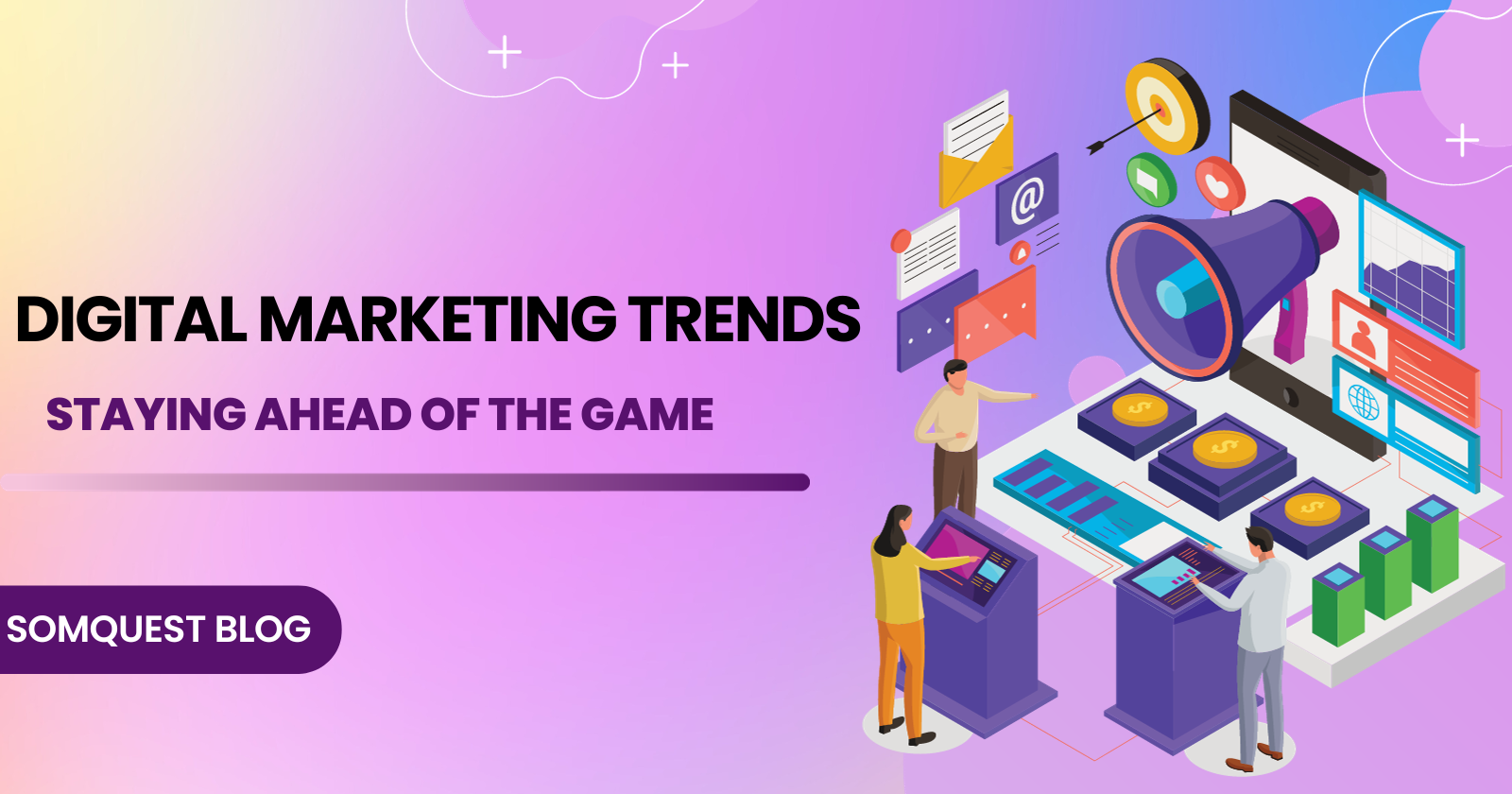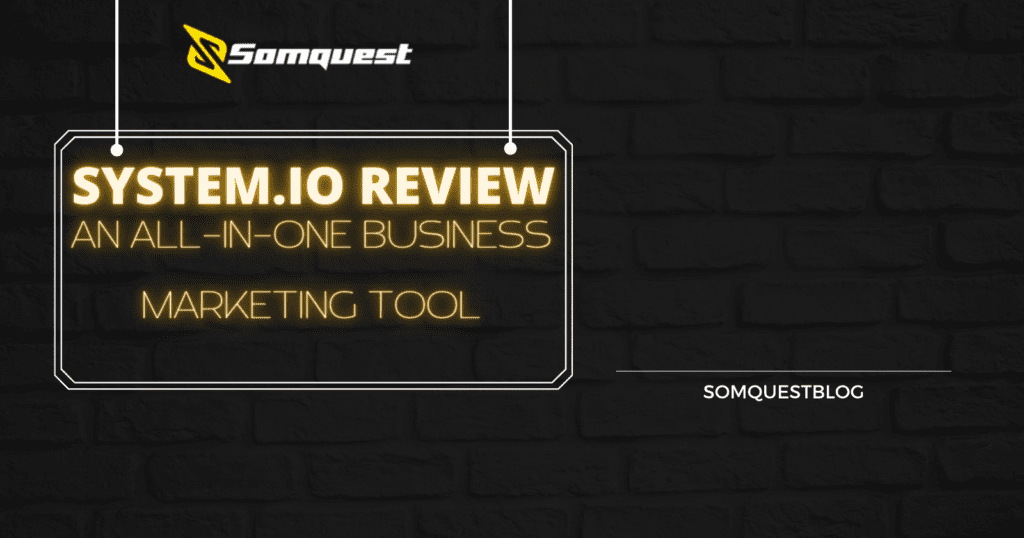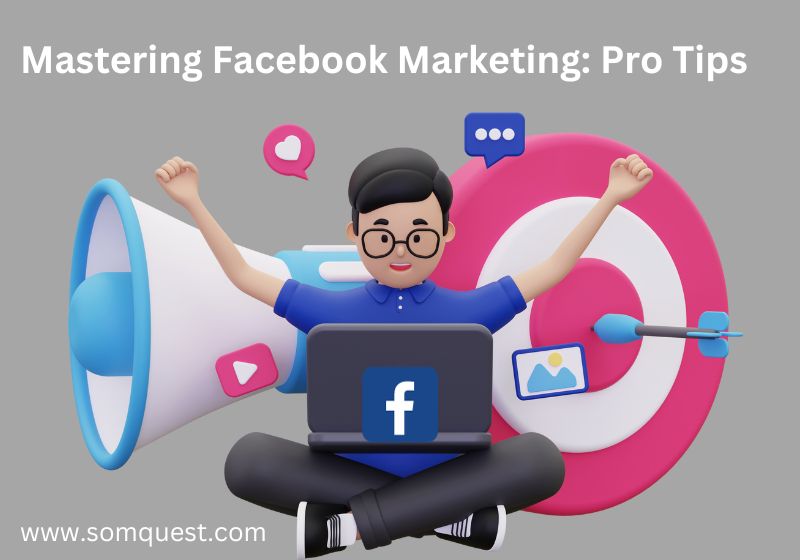In the fast-paced realm of digital marketing, where the landscape evolves almost as swiftly as a click, staying ahead of the game is paramount. As businesses navigate this dynamic environment, understanding the latest trends becomes not just an advantage but a necessity. In this article, we embark on a journey through the ever-changing world of “Digital Marketing” to illuminate the path for businesses and marketers alike.
In an era defined by screens and social media, digital marketing isn’t merely a strategy; it’s the lifeline of modern businesses. It’s the art and science of capturing attention, building relationships, and driving results in an increasingly online world. Whether you’re a small business owner, a marketing professional, or an aspiring entrepreneur, the digital marketing trends explored here will shape your strategies, influence your decisions, and ultimately determine your success.
As we delve into these trends, consider this article your compass in the digital wilderness. We’ll traverse the historical landscape of digital marketing, examine its current terrain, and, most importantly, map out the key trends that are reshaping the future.
So, fasten your seatbelts, dear reader, as we embark on this journey to explore how you can not only keep up with but thrive in the ever-evolving realm of digital marketing. It’s a journey filled with insights, strategies, and actionable tips that will empower you to harness the full potential of digital marketing trends and stay ahead of the game. Welcome aboard!
Table of Contents
Why Digital Marketing Matters
In an era defined by digitization, smartphones, and the omnipresence of the internet, digital marketing has emerged as the linchpin of success for businesses across the globe. Gone are the days when merely having an online presence sufficed; today, it’s about leveraging the latest digital marketing trends to stand out in the vast digital landscape.
Digital marketing matters for several compelling reasons. First and foremost, it grants businesses access to a global audience. The internet transcends borders, making it possible for even the smallest local businesses to reach potential customers worldwide. This level of reach was unimaginable in traditional marketing.
Moreover, digital marketing is incredibly cost-effective compared to traditional advertising methods. It allows businesses to allocate their budgets more efficiently, ensuring that marketing efforts yield substantial returns on investment. Whether you’re a startup with limited resources or an established enterprise, digital marketing levels the playing field.
Furthermore, the digital realm provides unparalleled opportunities for engagement and interaction with customers. Through social media, email marketing, and other digital channels, businesses can forge genuine connections, gather feedback, and tailor their offerings to meet customers’ evolving needs.
However, the digital landscape is in a constant state of flux. New technologies, platforms, and trends emerge regularly, reshaping how businesses connect with their audiences. This is precisely why staying updated with digital marketing trends is not just beneficial; it’s crucial for survival.
Consumer behaviours evolve rapidly in the digital age, and businesses must adapt accordingly. For example, the rise of mobile devices has shifted the focus towards mobile-friendly websites and apps. Likewise, the increasing emphasis on video content requires businesses to incorporate video marketing into their strategies.
The competitive landscape is equally dynamic. To outshine competitors and capture the attention of tech-savvy consumers, businesses must embrace emerging trends such as AI-driven marketing automation, voice search optimization, and immersive experiences like augmented reality.
The Evolution of Digital Marketing
In the vast realm of digital marketing, where the only constant is change, understanding its evolution becomes paramount for businesses looking to thrive in the online sphere. This journey through the annals of digital marketing not only reveals its past but also serves as a compass for navigating the ever-shifting landscape of the industry.
The inception of digital marketing as we know it today traces back to the 1990s when the internet began to creep into our lives. Initially, it revolved around rudimentary websites, email marketing, and those often obtrusive banner advertisements. The concept of search engine optimization (SEO) was still in its infancy, and social media platforms were a distant dream.
The late ’90s witnessed the rise of search engines like Yahoo and, soon after, the behemoth that is Google. This revolutionized how information was accessed online and birthed the need for SEO practices to help websites rank higher in search results. Keywords and backlinks emerged as the backbone of online visibility.
The early 2000s ushered in a new era with the emergence of social media platforms like Facebook and LinkedIn. This shift allowed businesses to engage directly with their target audience, marking a pivotal change in digital marketing strategy.
In the late 2000s, with the proliferation of smartphones, businesses had to adapt once again. Websites and content needed to be mobile-friendly to cater to the on-the-go consumer, and this led to the rise of responsive web design and mobile applications.
As consumers became increasingly savvy, content marketing gained prominence. Quality content not only attracted audiences but also boosted SEO rankings. Blogging, video marketing, and podcasts became common tools in the digital marketer’s arsenal.
The 2010s brought with them the era of big data. Marketers began harnessing the power of data analytics to gain deep insights into consumer behaviour. This data-driven approach allowed for highly targeted and personalised marketing campaigns.
Today, artificial intelligence and marketing automation are at the forefront of the industry. Chatbots provide real-time customer support, personalised recommendations are served up by algorithms, and predictive analytics help in forecasting trends and consumer behaviour.
One clear lesson emerges from this journey: adaptability is the cornerstone of success in digital marketing. Businesses that failed to adjust to these monumental shifts often found themselves relegated to the annals of the internet. On the flip side, those who enthusiastically embraced change thrived, mastering the art of reaching their target audiences in innovative and engaging ways.
For businesses, the message is unmistakable: adapt or risk obsolescence. Keep a vigilant eye on emerging technologies, evolving consumer behaviours, and ever-shifting SEO algorithms. Embrace new tools, strategies, and platforms as they emerge. The ability to pivot swiftly and intelligently in response to digital marketing’s ongoing evolution is the key to not just surviving but thriving in the ever-changing world of online promotion.
Current Digital Marketing Landscape
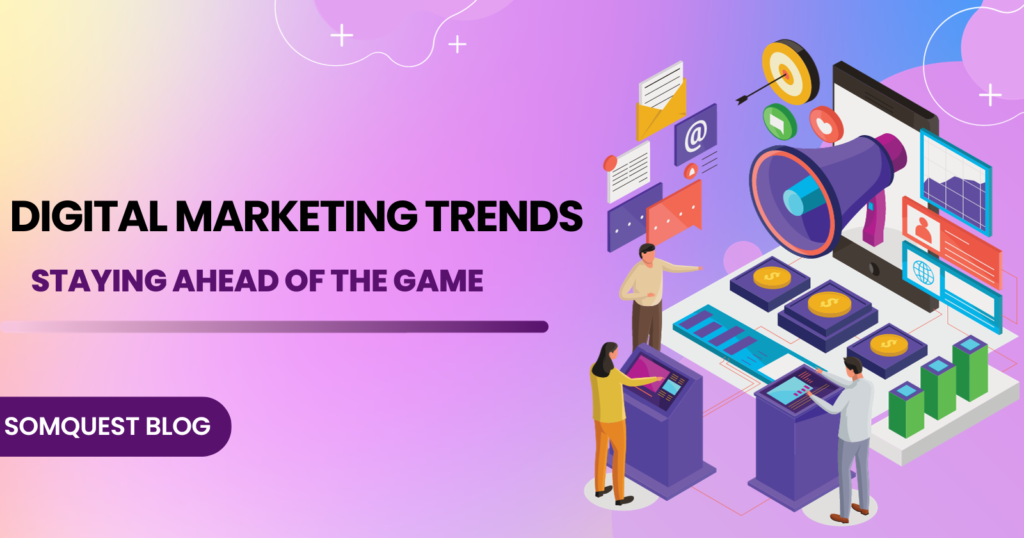
In the relentless march of digital progress, the present state of digital marketing is both dynamic and transformative. To succeed in this landscape, businesses must not only grasp the current trends and technologies but also be agile in adapting to these shifts.
The Contemporary Digital Landscape:
Content Continues to Reign: In the realm of digital marketing, content remains the undisputed king. High-quality, relevant, and engaging content continues to be the driving force behind successful online marketing campaigns. From blog posts to video content and interactive infographics, it’s the content that draws and retains the audience’s attention.
The Surge of Video Marketing: Video marketing has undergone a meteoric rise. Short-form videos on platforms like TikTok and Instagram Reels, live streaming on platforms such as YouTube and Facebook, and the emergence of long-form content on platforms like YouTube and Twitch have transformed how brands connect with their audiences.
AI and Chatbots: Artificial intelligence (AI) has stepped to the forefront of digital marketing. AI-driven chatbots are now used for personalised customer interactions, lead generation, and even e-commerce transactions. Machine learning algorithms help in predicting customer behaviour, streamlining marketing efforts, and personalising content.
Voice Search Optimization: With the proliferation of voice-activated devices like smart speakers and virtual assistants, voice search optimization has gained significance. Marketers are adapting their strategies to ensure their content is voice-search friendly, aligning with the way people now seek information.
Data Privacy and GDPR Compliance: Data privacy concerns and regulatory changes like the GDPR (General Data Protection Regulation) have led to a heightened focus on data security and transparency. Marketers must prioritise customer data protection and comply with these regulations, ensuring trust and accountability.
Social Commerce: Social media platforms have evolved into more than just marketing channels; they are now shopping destinations. Features like Instagram Shopping and Facebook Marketplace allow users to discover and purchase products without leaving the platform.
Sustainability and Social Responsibility: Consumers are increasingly valuing brands that are socially responsible and environmentally conscious. Businesses that incorporate sustainability into their marketing strategies not only meet consumer expectations but also contribute to positive brand image.
Key Digital Marketing Trends

In the fast-paced realm of digital marketing, staying attuned to the latest trends is akin to harnessing the winds of change. Several pivotal trends are shaping this landscape, revolutionising the way businesses engage with their audiences.
The Vanguard Trends:
Content Marketing Evolution: Content marketing is no longer solely about blog posts and articles. Interactive content, like quizzes and polls, as well as immersive storytelling through video, is at the forefront. This trend reflects the demand for richer, more engaging experiences.
Social Media’s Dominance: Social media platforms continue to wield immense influence. With features like ephemeral content (e.g., Stories on Instagram and Snapchat) and live streaming, businesses can create real-time connections with their audience.
SEO in the Spotlight: Search Engine Optimization (SEO) has evolved from mere keyword optimization to a holistic approach that considers user experience, mobile-friendliness, and technical aspects. Voice search and local SEO have become crucial facets of SEO strategy.
AI-Powered Marketing: Artificial Intelligence (AI) is a game-changer. AI algorithms drive personalization, enabling businesses to provide tailored content and recommendations. Chatbots powered by AI enhance customer service, improving response times and engagement.
Video Marketing Ascendancy: Video has transformed into a marketing powerhouse. Live streaming, webinars, and short video content are gaining traction. Businesses are leveraging video to convey messages more effectively and create emotional connections with audiences.
Content Marketing Revolution
Content marketing, often deemed the lifeblood of digital strategies, has undergone a remarkable evolution. Its significance today extends far beyond blog posts and articles. This paradigm shift arises from several factors, including changing consumer behaviour and technological advancements.
Content marketing revolves around crafting valuable, relevant, and consistent content to attract and retain an audience. It’s the art of communicating without directly selling, creating a genuine connection with the audience.
The Winds of Change:
Audience-Centric Approach: The cornerstone of content marketing now lies in a profound understanding of the audience. Rather than generic content, businesses strive to deliver personalized experiences. Every piece of content is a conversation, addressing specific pain points, interests, and aspirations.
Multimedia Storytelling: Static blog posts have given way to dynamic multimedia storytelling. Videos, podcasts, infographics, and interactive content dominate. For instance, a makeup brand might create video tutorials, product demos, and user-generated content to engage the audience more effectively.
Emphasis on Authenticity: Today’s consumers value authenticity over polished perfection. Brands reveal their human side, showcasing behind-the-scenes moments, user-generated content, and real-life stories. Authenticity fosters trust, a fundamental element in any consumer-brand relationship.
SEO and User Intent: Content is not just about filling webpages with keywords. Modern content marketing aligns with user intent. It involves thorough keyword research and optimization, but it goes beyond by addressing the actual questions and needs of the audience.
SEO: Navigating the Algorithm Updates
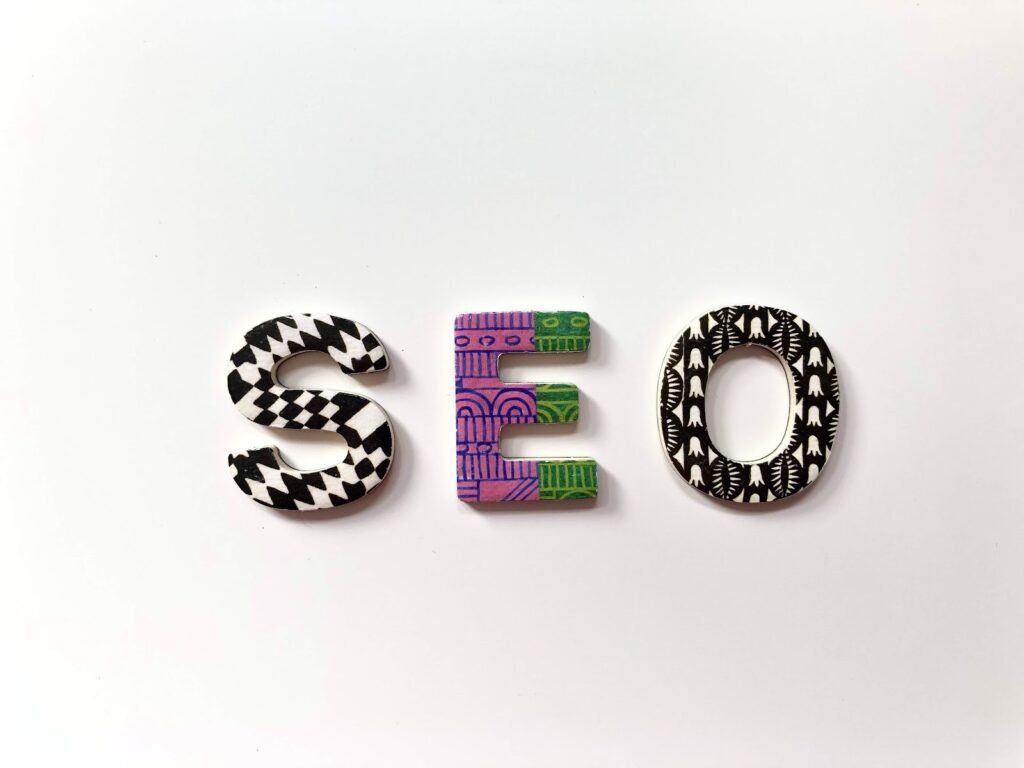
In the expansive realm of digital marketing, search engine optimization (SEO) reigns as a fundamental and ever-evolving component. Its significance cannot be overstated, as SEO plays a pivotal role in determining a brand’s online visibility, ranking, and overall success. To truly understand its importance, one must first grasp its relationship with search engine algorithms and the continuous updates that define the digital landscape.
SEO is the art and science of enhancing a website’s visibility on search engines like Google, Bing, or Yahoo. It involves a multifaceted approach aimed at improving a website’s organic (non-paid) search results ranking. The primary goal of SEO is to ensure that a website appears prominently in relevant search engine queries, driving organic traffic and increasing its online presence.
Search engines employ complex algorithms that determine the ranking of websites in response to user queries. These algorithms are dynamic and subject to frequent updates, often aimed at refining the search experience and rewarding websites that provide valuable, relevant, and high-quality content.
Recent algorithm updates, such as Google’s BERT and Core Web Vitals, have reshaped the SEO landscape. BERT, for instance, focuses on understanding the context of words in search queries, leading to more precise search results. Core Web Vitals prioritize user experience by measuring aspects like page load speed, interactivity, and visual stability.
Adapting to Algorithm Changes
Navigating the SEO landscape successfully involves adapting to these algorithm updates. Here are key strategies:
High-Quality Content: Content remains king in SEO. Algorithms reward websites that offer informative, engaging, and well-structured content. Focus on creating content that answers user queries comprehensively and authentically.
Mobile Optimization: With the prevalence of mobile device usage, websites must prioritise mobile optimization. Ensure responsive design, fast loading times, and a seamless user experience on mobile platforms.
Keyword Research: In light of BERT, keyword research becomes more critical. Focus on long-tail keywords and natural language queries to align with user search intent.
Backlinks: High-quality backlinks from reputable sources continue to influence rankings. Build a robust backlink profile by creating shareable content and collaborating with relevant websites.
User Experience (UX): Core Web Vitals emphasise UX. Optimise page load times, interactivity, and visual stability to enhance user satisfaction.
Data Analysis: Regularly monitor website performance, analyse user behaviour, and measure key performance indicators (KPIs). Data-driven insights inform optimization strategies.
Adaptive Strategies: Stay informed about algorithm updates through reliable SEO resources. Adapt your SEO strategies promptly to align with changing requirements.
In the dynamic realm of digital marketing, SEO is the compass that guides brands to online success. It’s a journey marked by algorithmic updates, but those who embrace change, prioritize user experience, and consistently deliver valuable content will find themselves at the forefront of the digital landscape.
AI and Automation: Shaping the Future
In the rapidly evolving landscape of digital marketing, two transformative forces have emerged as game-changers: Artificial Intelligence (AI) and automation. Together, they are reshaping the way businesses approach marketing, ushering in a new era of efficiency, personalization, and data-driven decision-making.
Artificial Intelligence, once confined to the realm of science fiction, has become an integral part of digital marketing. Its ability to process vast amounts of data, recognize patterns, and make real-time decisions is nothing short of revolutionary. Here’s how AI is leaving its mark on the industry:
Enhanced Personalization: AI algorithms analyse user behaviour, preferences, and past interactions to deliver highly personalised content and recommendations. For instance, e-commerce giants like Amazon leverage AI to suggest products tailored to individual customers.
Predictive Analytics: AI can forecast future trends and customer behaviour based on historical data. Marketers use predictive analytics to optimise their strategies, from content creation to ad targeting.
Chatbots and Customer Service: AI-powered chatbots provide instant customer support, answering queries and resolving issues around the clock. They enhance user experiences while reducing response times.
Content Generation: AI tools can generate written content, such as product descriptions and reports, saving time and resources. While not replacing human creativity, they complement content marketing efforts.
Conclusion

In this exploration of digital marketing trends, we’ve unveiled a dynamic landscape where change is the only constant. Digital marketing isn’t just a tool; it’s a force that shapes how businesses connect with their audiences.
As we conclude this journey through digital marketing’s ever-shifting terrain, remember that embracing change is the key to success. The transformative potential of these trends is boundless, offering you the tools to forge stronger connections with your audience, elevate your brand, and drive growth.
So, I invite you to take the insights gleaned here and embark on your digital marketing journey. Stay curious, innovate fearlessly, and explore the endless possibilities that await in the dynamic realm of digital marketing.
What’s the biggest challenge in adapting to AI-driven digital marketing trends?
The primary challenge in embracing AI-driven digital marketing trends is striking the right balance between automation and maintaining a human touch. While AI streamlines processes, human creativity and empathy remain essential for crafting compelling content and building authentic relationships with audiences.






